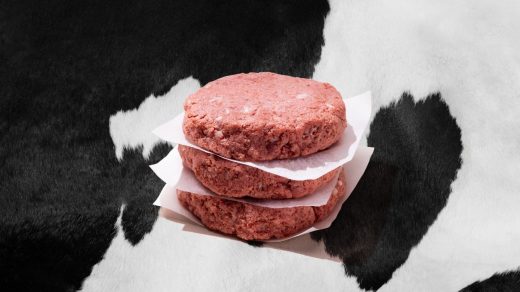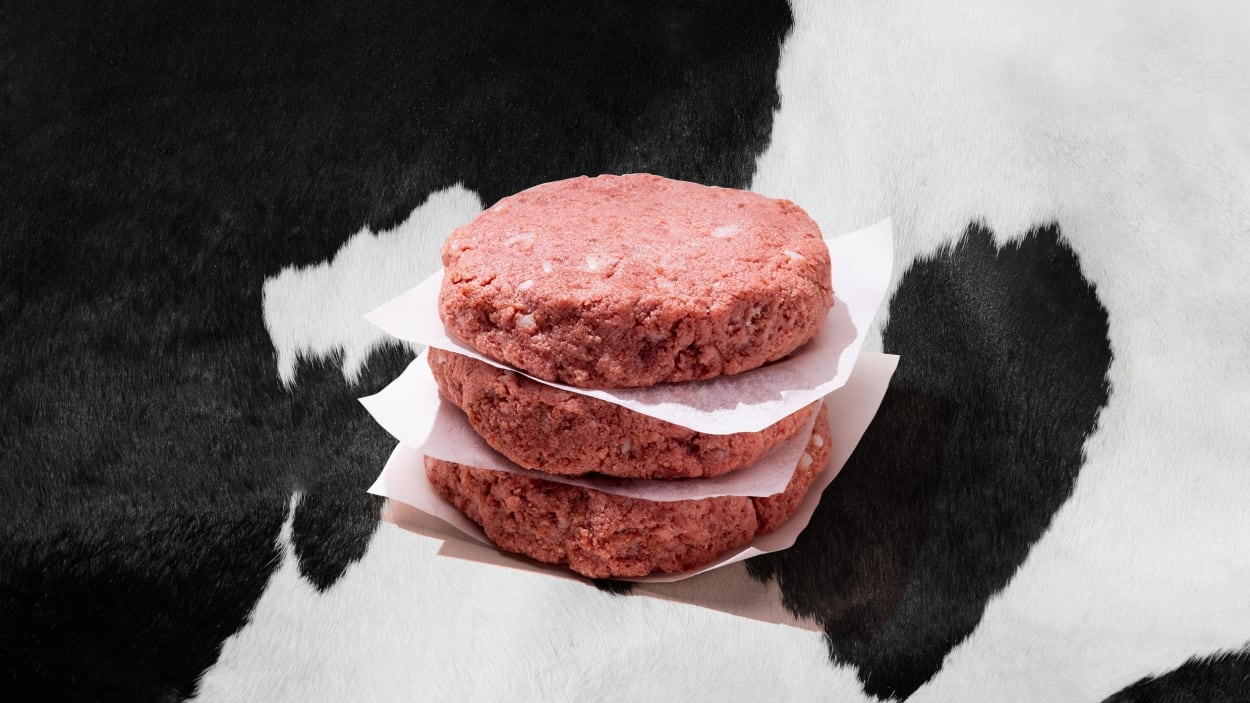Why this lab-meat startup is keeping cows in the equation
By Larissa Zimberoff
Tissue engineering doesn’t sound very foodie, but turns out it’s the primo specialization needed for reimagining meat. Experts in the field aren’t easy to steal away from the medical world, but it’s happening. Sometimes they even launch their own company, like Ali Khademhosseini, who started Omeat.
Whether it’s food or medicine that’s more crucial to humanity is up for debate. For Khademhosseini, food offers the potential for a bigger impact (maybe) that’s easier to accomplish (maybe). He can either help “a bunch of people that have a specific disease,” he says, “or everyone when you create a sustainable food system.”
One thing he’s sure of is that cell-cultivated meat is “much more doable than tissues for transplantation,” he says. They don’t have to function, right? “With meat, you just have to grow the cells and go some of the way.”
The impact of what we eat is not up for debate. It’s estimated that 77% of habitable land on Earth is needed for industrial farming animals—both for crops and to graze. Depending on whom you ask, greenhouse gas emissions produced by livestock range from 11.1% to 19.6% of all emissions.
As with most novel ideas, Khademhosseini initially was skeptical about the rise of lab-grown meat. “Here we are trying to make therapies for people that need it, and there’s another group that’s trying to make a $300,000 burger.” He didn’t understand it. Until he did.
If we organized every cell-cultivated meat company into what goes into their end product, we’d have about 100 startups on the left, and one, Omeat, on the right. You see, Omeat is using a herd of its own cattle, grazing on their own regenerative land, to fuel your next burger.
But it’s not what you think.
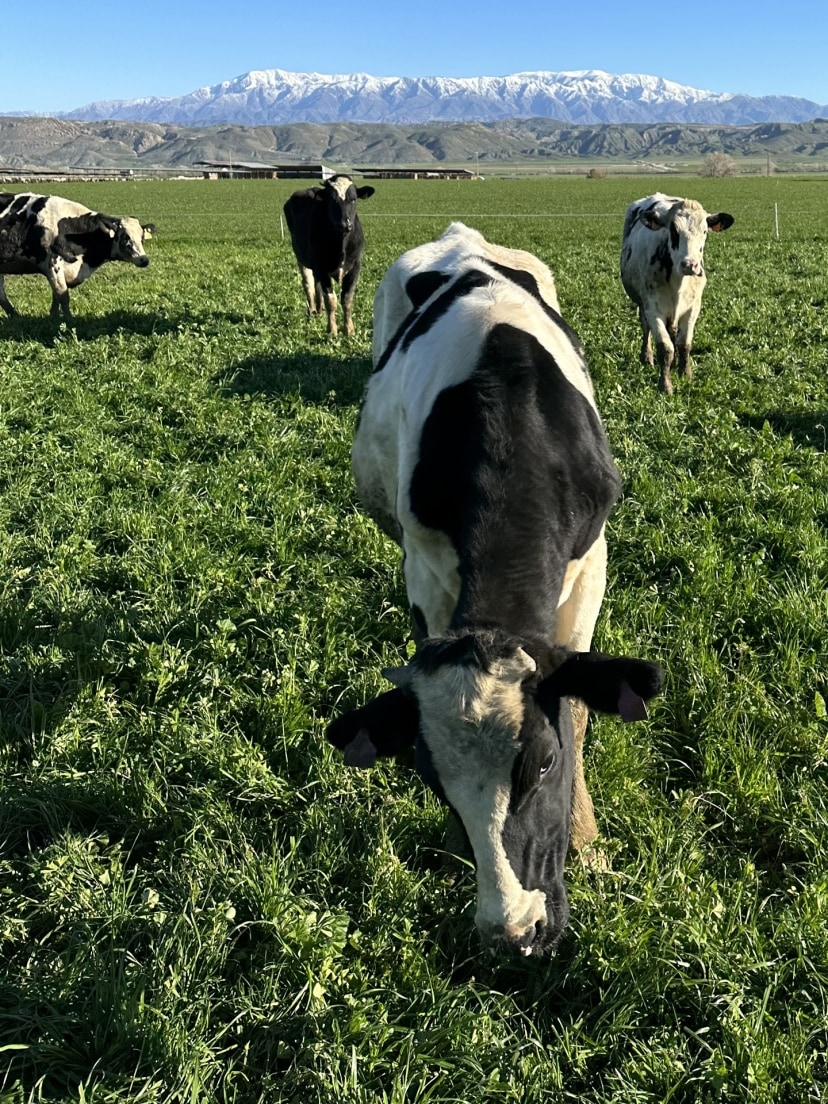
Why animals may still help make meat
Omeat takes cell biopsies from their cows and uses that to grow muscle cells in the lab, in steel-tank bioreactors that allow the cells to proliferate. Omeat scientists also take plasma from the herd of about 70. What they need are various proteins found in blood––called growth factors––that fuel the beef cells. Elements they don’t need are put back into the cow. It’s a process, known as an exchange transfusion, like you might see in a medical lab.
Alternative-protein startups are focused on two highly complex problems. One, which cell lines they use. Immortal cell lines can be used into perpetuity and are considered ideal, but they require genetic modifications. Two, how to replace fetal bovine serum (FBS), which is cost prohibitive beyond the most well-funded lab. (FBS is taken from the blood of a cow fetus. It’s a far superior cocktail that signals cells to begin to grow. Startups in this space are almost all hoping to create plant-based alternatives.)
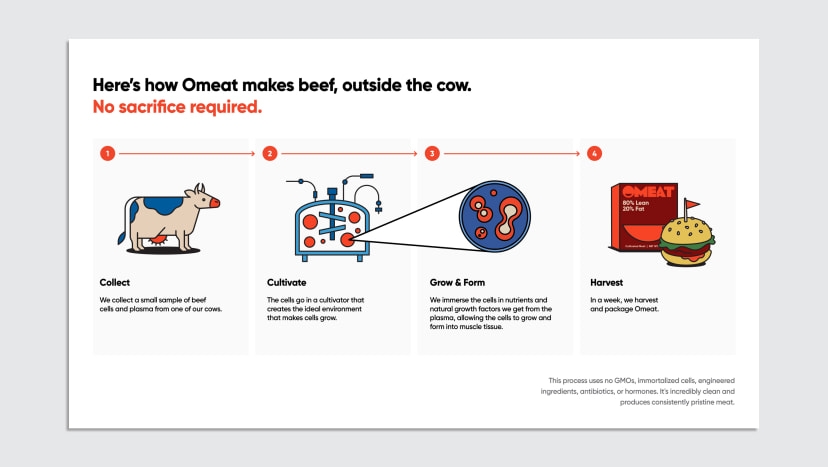
What initially inspired Khademhosseini was reading Liz Specht’s white paper titled, “An analysis of culture medium costs and production volumes for cultivated meat.” Specht is the SVP of science and technology at the Good Food Institute, a nonprofit that promotes plant- and cell-based alternatives to traditional animal proteins. It was one of her first GFI reports. The goal was to answer an internal question bouncing around the nonprofit: Is cultivated meat something that could ever be done with price parity?
That was Khademhosseini’s eureka moment. Could Omeat replace FBS with growth factors from animals directly? “The economics just all of a sudden flip on their head,” he says, “because you can get hundreds of liters of liquid that’s as rich as FBS every year from one cow.”
It’s so rich that Omeat has already spun off a successful product. It’s called Plenty and is a replacement for FBS that can be used in pharma, medicine, and yes, food. Akhilesh Gaharwar, a professor in the department of biomedical engineering at Texas A&M University, has been testing it in his lab. “The results were indistinguishable,” he says, “highlighting the efficacy and reliability of Plenty as an FBS alternative.”
Omeat’s FBS solution was not on Specht’s radar, but she agrees that “it’s an interesting approach.” However, she thinks that relying directly on animals affects process consistency. “You’d want to remove biological variability,” she says. This includes plasma that comes from animals.
Another vote for keeping animals out of the equation is from Jess Krieger, CEO of Ohayo Valley. While originally focused on growing wagyu cells, Ohayo is helping the industry choose and tailor cell lines. Krieger claims to have 50 mechanisms for editing animal cells. She also won’t need FBS, she says, because she “has a way to get serum out of the industry.” By using genetic engineering, her strategy is to “make the cells super cheap out of the gate.”
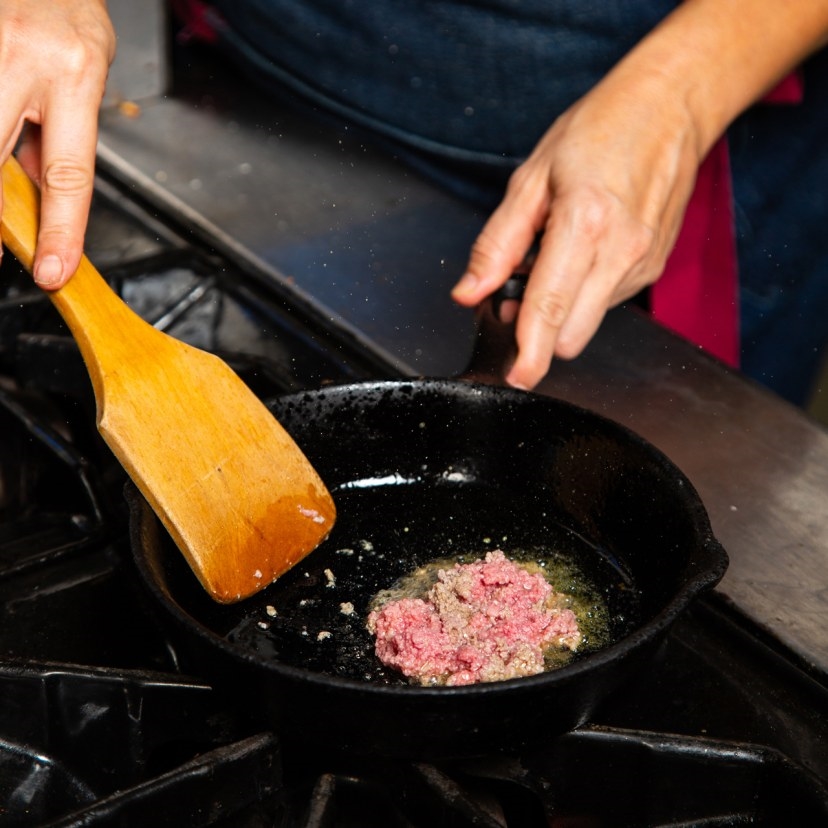
Fire in the belly
Khademhosseini may have doubters, but he also has grit, what he calls “a fire in the belly.” His LinkedIn page is envy inducing. Before Omeat, before he was CEO of the Terasaki Institute, before being a full professor at Harvard, before being a post-doc in Bob Langer’s lab at MIT (Langer is the cofounder of vaccine-maker Moderna), he was a student at the University of Toronto. Long before that, he was a kid in Iran, a refugee fleeing a war with his family.
It took Khademhosseini two tries to get into MIT, but the wait was meaningful. “I learned a lot about what not to do in a lab,” he says. “In science, asking the right questions is important. Designing the right experiment is important.” At MIT, he gained a supportive mentor and a valuable network. “Obviously Bob [Langer] is ahead of the curve, and he appreciates when people take paths that are not super well-defined,” says Khademhosseini. “He was very supportive when I started doing the meat stuff.”
After MIT came Harvard. Few will ever choose to jettison a faculty position, but Khademhosseini wanted to learn how to run and scale a company. So he joined “The Everything Store.” He won’t say exactly what he did for Amazon as a senior scientist, which adds another air of intrigue to his career.
After Amazon, Khademhosseini started Omeat, which has raised $40 million in funding. While I can’t report on how an Omeat burger tastes, I’m told samples are “big,” which is far from the norm for any lab-made meat company.
“I think super highly of him,” says Langer in our conversation about Khademhosseini’s latest venture. While most of his former PhD students remain in the medical field, Langer isn’t surprised by any alternate career paths. “I don’t think it’s an either-or,” he says. “They just made a discovery, they think it can be useful, and they want to make it happen.” Whether he’ll ever try Omeat is still in question. (The Moderna cofounder doesn’t eat red meat for health reasons.) “I’m not sure I need any of that stuff. I would ask one of my friends who was a nutrition expert whether it was safe or not.”
Opinions will be endless in the matter of cell-cultured meat. Animal rights activists may be shocked that cows will still be needed in our future. Investors may be wounded that only a handful of startups ever pay off—if any. Founders may be disappointed that their chosen solution wasn’t the “right” one.
It’s not an either-or for Khademhosseini. It’s either this, or human extinction. “I fundamentally believe this,” he says. “If we don’t address sustainability, there will be mass migration or mass extinction.”
(19)

